Tea Olive (Osmanthus fragrans) Profile
Written by Iris
Oct 22 2021
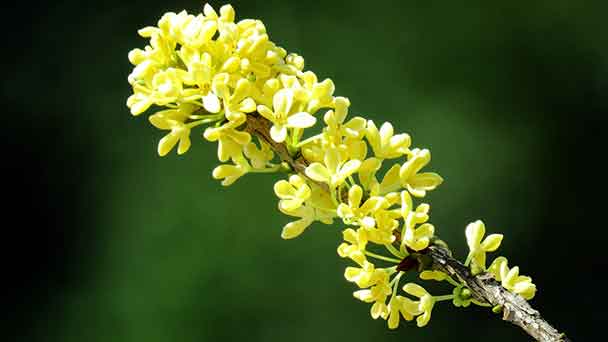
Tea olive (Osmanthus fragrans) is an evergreen and is highly prized for its attractive smell and visually attractive flowers and leaves. Not only do these tea olive add beauty to a garden space, but they also emit precious fragrances that can animate your landscape or bring the outdoors into your home if the breeze from the garden comes in through the windows.
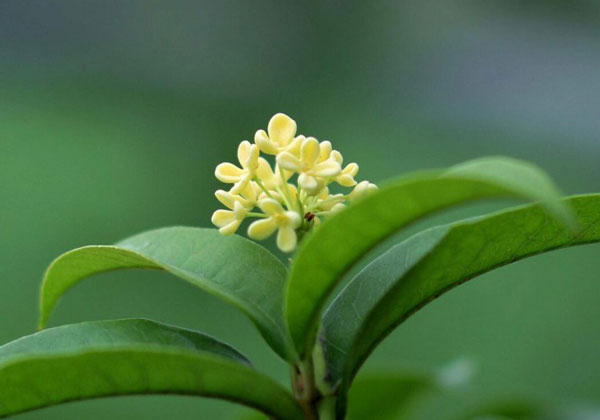
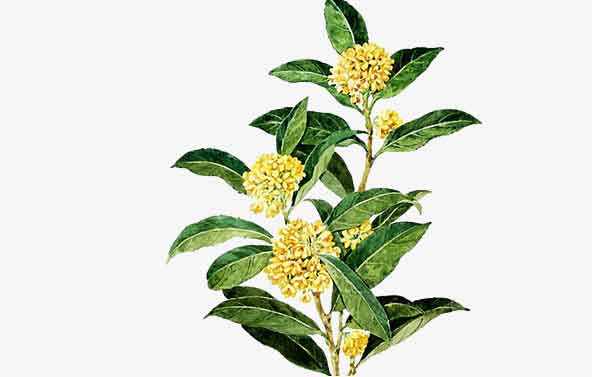
With Stem Cuttings
Tea olive tree (Osmanthus fragrans) may be propagated from new growth. Mix equal portions of potting soil, sand, and peat (or Perlite) in a small container. Start with an 8-inch pot. Using sharp clippers, cut several shoots of new growth from the shrub. Remove all leaves from the bottom 2-inches of each shoot. Rough up the bottom of each shoot (this will make it easier for roots to develop). Gather three of the shoots together (as if making a bouquet) and place them in the container of soil. Water well. Set the pot outside in the sun (preferably near a water source). The stems must stay moist for a root system to develop. In a couple of months, pull gently at the plant. If the plant resists, then roots have been established. Move the plant up to a pot that is one size larger. Allow the tiny shrub to grow for a few months and then transfer to a container that is one size larger. Continue this same operation until the plant has been moved up to a 3-gallon container. Allow the shrub to grow for several months in the container before transplanting into your landscape.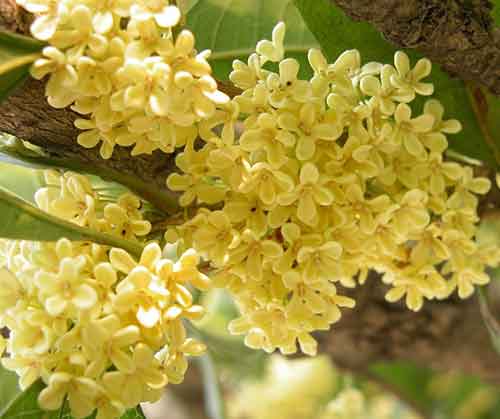
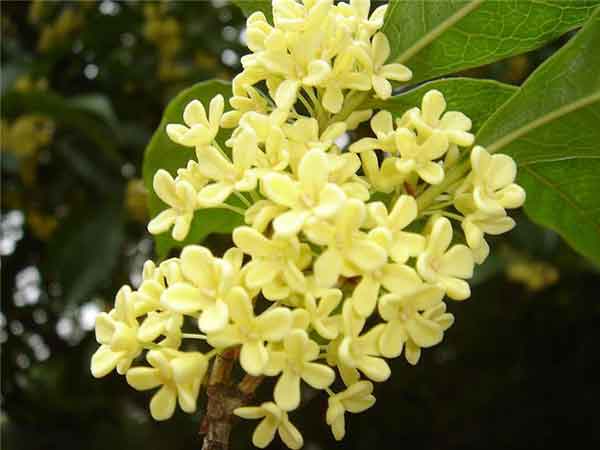
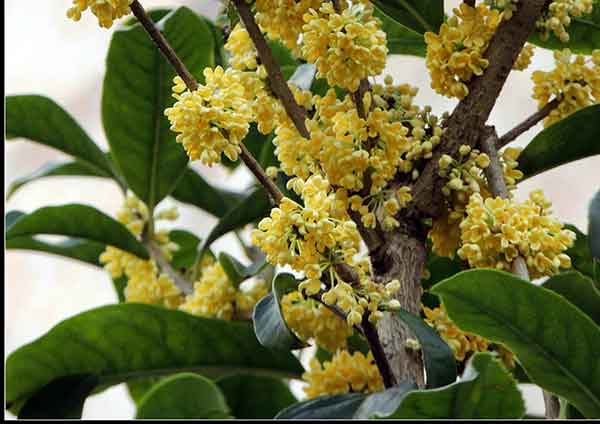
Osmanthus ×fortunei (Fortune's osmanthus, Zones 7 - 9) is a hybrid of O. heterophyllus and osmanthus fragrans and has characteristics of both parents. Juvenile leaves are spine-tipped, but the adult leaves have no marginal spines. Fragrant flowers bloom in late fall, and they can grow into a large oval to rounded shrub 15 to 20 feet high and wide.
Osmanthus ×burkwoodii (Burkwood osmanthus, Zones 6 - 8) is a dense, rounded shrub that grows 6 to 10 feet tall and wide. This evergreen shrub bears fragrant flowers characteristic of the genus.
Osmanthus delavayi (Delavay osmanthus, Delavay tea olive; Zones 7 - 9) is native to western China and grows 6 to 8 feet tall and a bit wider. It has twiggy growth and graceful arching branches that are well covered with small, glossy, dark green, ovate leaves. Fragrant flowers bloom in spring, and it is more widely grown in the western states since it prefers alkaline soil.
Osmanthus serrulatus (wild sweet-scented Chinese osmanthus, Zones 7 - 9) grows 6 to 12 feet tall, bears fragrant flowers, and is a slow-growing broadleaf evergreen shrub. Leaves are lustrous, leathery textured, and strongly serrate. On mature plants they may become entire and loose their toothed edges.
Osmanthus suavis (Himalayan osmanthus, Zones 7 - 10) is more upright than other Osmanthus species, and tends to be a bit leggier. In late winter to early spring, however, it is literally covered with clusters of white, fragrant flowers. Osmanthus decorus is another species that is evergreen and bears fragrant flowers. It seems to be less well-known than other species.
Osmanthus yunnanensis (Yunnan osmanthus, Zones 8 - 10) grows up to about 33 feet tall, so it one of the largest of the genus. Ivory-white, mildly fragrant flowers are almost hidden from view by the large, olive-green, leathery leaves. Although rarely cultivated in the United States, Woodlanders Nursery lists it for sale on their site.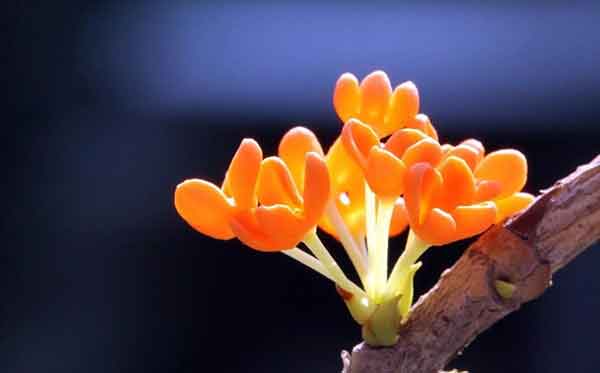
Tea Olive PictureTea Olive InfoTea Olive Native HabitsTea Olive DistributionHow to Grow & Care for Tea OliveHow to Grow Tea OliveHow to Care for Tea OliveTea Olive UsesEdible UsesMedicinal UsesLandscape UseTea Olive VarietiesTea Olive Common Pests/DiseasesTea Olive Design TipsTea Olive Companion Plants
Tea Olive Picture

Tea Olive Info
| Botanical Name | Osmanthus fragrans |
| Common Name | Tea Olive, Sweet Olive tree |
| Plant Type | Shrub |
| Mature Size | 15 to 30 feet tall |
| Sun Exposure | Full sun to partial shade |
| Soil Type | well drained, moist |
| Soil pH | 5.5 to 7.5 |
| Bloom Time | Spring, then intermittent |
Tea Olive Native Habits
With its glossy green leaves, tea olive, Osmanthus fragrans, can be pruned into a shrub or hedge, or if left alone can become a small tree at upwards of 20 feet or more. Its leaves resemble those of the holly, the difference being tea olives have opposite leaves, while hollies’ are alternate – hence another common name of false holly. The tea olive’s dense foliage provides a high-contrast backdrop for the tree’s best feature, its flowers. In early fall, and again in early spring, tea olive unfurls clusters of tiny creamy white flowers with a permeating fragrance often described as a cross between gardenia and jasmine. Other cultivars offer less common bloom colors in pale to deep yellow and orange, emitting strong scents of peach or orange blossom.Tea Olive Distribution
This long-lived shrub is a favorite of Florida gardeners, who prize it for its tough nature and sweet-smelling flowers. It performs best in North and Central Florida but can also be grown in South Florida if planted in partial shade.
How to Grow & Care for Tea Olive
How to Grow Tea Olive
- With Seeds
With Stem Cuttings
Tea olive tree (Osmanthus fragrans) may be propagated from new growth. Mix equal portions of potting soil, sand, and peat (or Perlite) in a small container. Start with an 8-inch pot. Using sharp clippers, cut several shoots of new growth from the shrub. Remove all leaves from the bottom 2-inches of each shoot. Rough up the bottom of each shoot (this will make it easier for roots to develop). Gather three of the shoots together (as if making a bouquet) and place them in the container of soil. Water well. Set the pot outside in the sun (preferably near a water source). The stems must stay moist for a root system to develop. In a couple of months, pull gently at the plant. If the plant resists, then roots have been established. Move the plant up to a pot that is one size larger. Allow the tiny shrub to grow for a few months and then transfer to a container that is one size larger. Continue this same operation until the plant has been moved up to a 3-gallon container. Allow the shrub to grow for several months in the container before transplanting into your landscape.

How to Care for Tea Olive
- Light
- Soil
- Water
- Temperature and Humidity
- Fertilizer
- Pruning

Tea Olive Uses
Edible Uses
The unripe fruits are preserved in brine like olives[183]. The very fragrant flowers are used by the Chinese to impart a pleasant aroma to tea, wine and sweet dishes such as lotus seed soup, pastries and steamed pears. They are also added to herbal medicines in order to disguise obnoxious flavours. The flowers have a scent of apricots.Medicinal Uses
The flowers are antitussive. They are used in cosmetics for the hair and skin, but are mostly used to flavour other medicines. A decoction of the stem bark is used in the treatment of boils, carbuncles etc. A past made from the stem or bark is used in the treatment of boils, carbuncles, whoping cough and retinitis. A decoction of the lateral roots is used in the treatment of dysmenorrhoea, rheumatism, bruises etc.Landscape Use
Tea olive shrub is also a versatile plant that can make a great backdrop for other plants. It looks good as a specimen plant, and its glossy, evergreen leaves and dense growth habit make it well suited for screens, hedges, and individual specimen plants.
Tea Olive Varieties
Osmanthus heterophyllus (holly tea olive, false holly, or holly osmanthus; Zones 7 - 9) is used in borders, hedges, and barrier plantings where its extremely spiny leaves can be utilized. Several cultivars are available in various sizes and leaf characteristics that may be better choices for many landscapes.Osmanthus ×fortunei (Fortune's osmanthus, Zones 7 - 9) is a hybrid of O. heterophyllus and osmanthus fragrans and has characteristics of both parents. Juvenile leaves are spine-tipped, but the adult leaves have no marginal spines. Fragrant flowers bloom in late fall, and they can grow into a large oval to rounded shrub 15 to 20 feet high and wide.
Osmanthus ×burkwoodii (Burkwood osmanthus, Zones 6 - 8) is a dense, rounded shrub that grows 6 to 10 feet tall and wide. This evergreen shrub bears fragrant flowers characteristic of the genus.
Osmanthus delavayi (Delavay osmanthus, Delavay tea olive; Zones 7 - 9) is native to western China and grows 6 to 8 feet tall and a bit wider. It has twiggy growth and graceful arching branches that are well covered with small, glossy, dark green, ovate leaves. Fragrant flowers bloom in spring, and it is more widely grown in the western states since it prefers alkaline soil.
Osmanthus serrulatus (wild sweet-scented Chinese osmanthus, Zones 7 - 9) grows 6 to 12 feet tall, bears fragrant flowers, and is a slow-growing broadleaf evergreen shrub. Leaves are lustrous, leathery textured, and strongly serrate. On mature plants they may become entire and loose their toothed edges.
Osmanthus suavis (Himalayan osmanthus, Zones 7 - 10) is more upright than other Osmanthus species, and tends to be a bit leggier. In late winter to early spring, however, it is literally covered with clusters of white, fragrant flowers. Osmanthus decorus is another species that is evergreen and bears fragrant flowers. It seems to be less well-known than other species.
Osmanthus yunnanensis (Yunnan osmanthus, Zones 8 - 10) grows up to about 33 feet tall, so it one of the largest of the genus. Ivory-white, mildly fragrant flowers are almost hidden from view by the large, olive-green, leathery leaves. Although rarely cultivated in the United States, Woodlanders Nursery lists it for sale on their site.

Tea Olive Common Pests/Diseases
Tea olives really will have little problems to worry about if planted and cared for properly. They are long-lived and virtually pest free. Occasional disease and insect problems could occur but this would be mainly when the plant is under stressful conditions becoming more prone to pest problems. Root rot disease could occur but will be associated with the plant being planted in poorly drained or excessively wet soils. Occasionally, scale insects could be a problem but can be managed well with horticultural oil spray. A bonus for tea olives is that they are fairly resistant to damage by deer.Tea Olive Design Tips
Tea olive tree is also a versatile plant that can make a great backdrop for other plants. It looks good as a specimen plant, and its glossy, evergreen leaves and dense growth habit make it well suited for screens, hedges, and and individual specimen plants.Tea Olive Companion Plants
Petunias are one of the most popular companion plants for olive trees. You can find petunias in every color and their care is simple and easy. As well, petunias have this welcoming feature to deter common olive tree pests.Latest Updated
- Benefits of Bugleweed - 7 Science-backed Health Benefits
- Bugleweed Dangers & Side Effects - Is It Poisonous?
- How to Plant Evergreen Trees - What You Should Know
- When to Plant Evergreens - Grow Guide for Evergreen Trees
- 12 Wonderful Evergreen Shrubs for Your Garden
- 12 Popular Evergreen Plants with Pictures for Beginners
- When And How To Prune A Lilac Bush Like a Pro
- How to Grow & Care for Lilac Vine (Hardenbergia Violacea)
- Japanese Lilac Tree (Syringa Reticulata) Care & Propagation Guide
- Shumard Oak Pros and Cons - What to Know
Popular Articles
- Winter maintenance of Antirrhinum Majus
- How to Grow Terminalia Mantaly Tree
- How to Grow and Care for Crossostephium Chinense
- How to grow Antirrhinum Majus in spring
- Peristeria Elata (Dove Orchid) Profile: Info & Care Guide
- Underwatered Snake Plant (Sansevieria Trifasciata) - Signs And How To Fix
- How to Care for Brazilian Jasmine Plant (Mandevilla Sanderi)
- How to Grow & Care for Graptopetalum Purple Delight in Summer
- Rosa Chinensis (China Rose): Plant Growing & Care Tips
- How to Care for Baby Sun Rose (Aptenia Cordifolia)